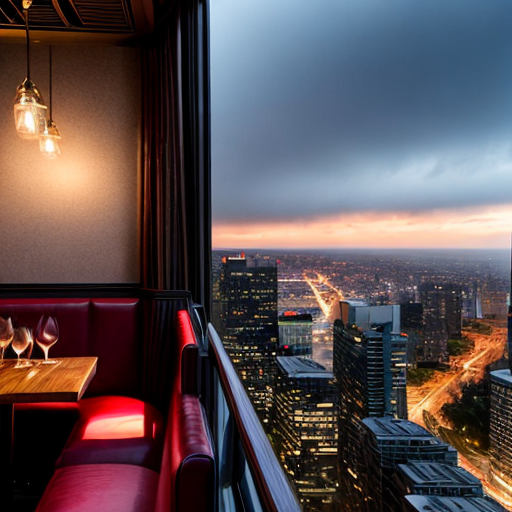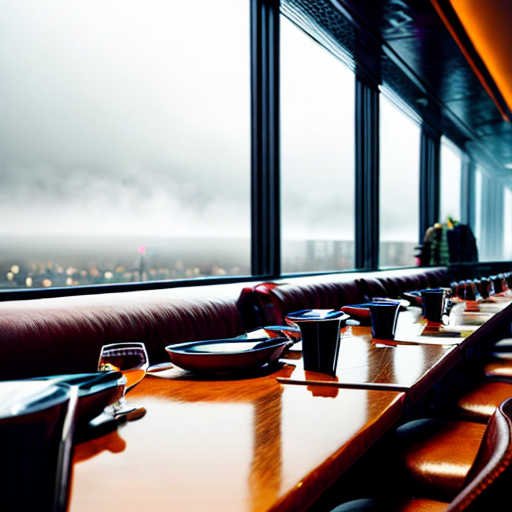Setting the Stage - Understanding the Importance of Restaurant Reviews
Setting the stage for a successful restaurant review begins with understanding the importance of these critiques. Restaurant reviews play a crucial role in helping diners make informed decisions about where to eat. As a blogger, it is essential to provide honest and detailed feedback on the food, service, ambiance, and overall dining experience. By following a few key tips on how to review a restaurant, you can help guide others towards memorable dining experiences and support local businesses in the process.
The Art of Observation - Key Elements to Assess in a Restaurant Review
An interesting fact about reviewing a restaurant is that studies have shown that the lighting in a restaurant can significantly impact the perception of the food. Dim lighting tends to make the food appear more flavorful and enjoyable, while bright lighting can make the food seem less appetizing. So, when reviewing a restaurant, it's important to consider the ambiance and lighting as it can influence your overall dining experience and perception of the food.
The art of observation is essential when writing a restaurant review. Key elements to assess include the quality of the food, presentation, portion sizes, flavor profiles, and ingredient freshness. Additionally, evaluating the service, atmosphere, cleanliness, and value for money are crucial aspects to consider. By paying attention to these details and providing a comprehensive analysis, you can offer readers a well-rounded perspective on their potential dining experience. Mastering the art of observation will not only enhance the credibility of your reviews but also help readers make informed decisions when choosing where to dine.
From Palate to Plate - Evaluating Food Quality and Presentation

When evaluating a restaurant's food quality and presentation, it is essential to consider the overall dining experience from palate to plate. Assessing the quality of the ingredients, cooking techniques, and flavor combinations can provide valuable insights into the chef's skill and attention to detail. Freshness and seasonality are also key factors to consider, as they can greatly impact the taste and overall enjoyment of a dish. Additionally, paying attention to portion sizes, plating techniques, and garnishes can offer clues about the restaurant's commitment to presentation and aesthetics.
One effective way to evaluate food quality is to consider the balance of flavors and textures in each dish. Does the dish have a harmonious blend of sweet, salty, sour, and umami flavors? Are the ingredients cooked to perfection, with the right amount of tenderness or crispiness? Does the dish showcase a variety of textures, such as crunchy, creamy, or chewy elements? By carefully analyzing these aspects, you can provide readers with a detailed and nuanced assessment of the food's quality and craftsmanship.
In terms of presentation, it is important to assess how each dish is plated and garnished. Does the presentation enhance the overall dining experience and make the dish visually appealing? Are the portions well-proportioned, and does the plating reflect attention to detail and creativity? Additionally, consider how the restaurant's choice of tableware, linens, and decor contribute to the overall aesthetic and ambiance of the dining experience. By evaluating these elements, you can provide readers with a comprehensive understanding of how the restaurant values presentation and visual appeal in its culinary offerings.
Ultimately, evaluating food quality and presentation in a restaurant review requires a keen eye for detail, a discerning palate, and an appreciation for the artistry of culinary craftsmanship. By carefully considering the balance of flavors, textures, and presentation techniques, you can offer readers valuable insights into the overall dining experience and help them make informed decisions about where to dine. Remember that each dish tells a story, and by delving into the nuances of food quality and presentation, you can paint a vivid picture of the restaurant's culinary prowess and creativity.
Beyond the Plate - Assessing Service
Fun fact: Did you know that reviewing a restaurant can be as exciting as being a food critic? When reviewing a restaurant, it's not just about the food; you can also evaluate the ambiance, service, and even the restroom cleanliness! So, next time you're reviewing a restaurant, don't forget to give a shout-out to the little details that make your dining experience truly memorable.
Beyond the plate, assessing the quality of service is a crucial aspect of writing a comprehensive restaurant review. Pay attention to how attentive, knowledgeable, and friendly the staff are throughout the dining experience. Evaluate the efficiency of the service, including the timing of courses, refills on drinks, and overall attentiveness to diners' needs. Additionally, consider the overall ambiance and atmosphere created by the staff, as their demeanor can greatly impact the overall enjoyment of the meal. By providing readers with insights into the level of service received, you can offer a well-rounded assessment of the restaurant's overall dining experience.

